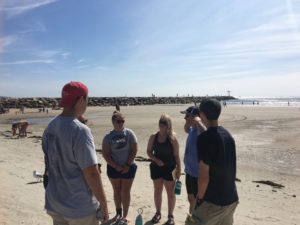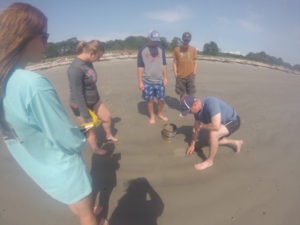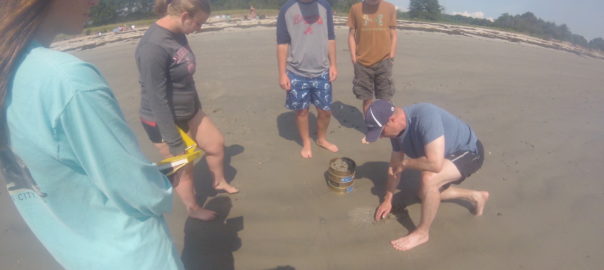After our departure from the Whites in New Hampshire, we headed back to Maine and checked into the Alheim Commons Dormitory at the Wells National Estuarine Research Reserve on Saturday evening. First thing on Sunday, we headed to Wells Beach (learning can be so rough sometimes)! Upon arrival, we took some time to reflect and observe the area which is often something that we forget to do in our fast paced lives.
We noticed the sounds, smells, what we saw (whether it be man-made structures or how high the tide was), and how the sand felt between our toes or which way the wind might have been blowing. These observations helped us make conclusions as we went to three different beaches.

We talked about the significant longterm effects of man-made structures (jetties and seawalls) and how they can affect the energy or power of the waves on shoreline sediment transport, which then ultimately affects the coarseness and build up of the beach sediment. We estimated the longshore current velocity by calculating the movement of a tennis ball in the water. We concluded that the longshore current was twice as fast in the open beach at Wells and Drake’s Island compared to Crescent Beach in Cape Elizabeth. This is due to Crescent Beach having more protective barriers such as its swooping shape, reefs, and offshore sand bars which absorb some of the energy of the waves. Sand grains were finest at Crescent because the there isn’t enough wave power to bring in heavier sediments.
The beach is officially not just a place to get sunkissed skin and salty hair. There is A LOT going on from the moment your toes hit the sand to the point they hit the water (but of course we got some down time to get our tan on too).

— Kaitlynn Hutchins


